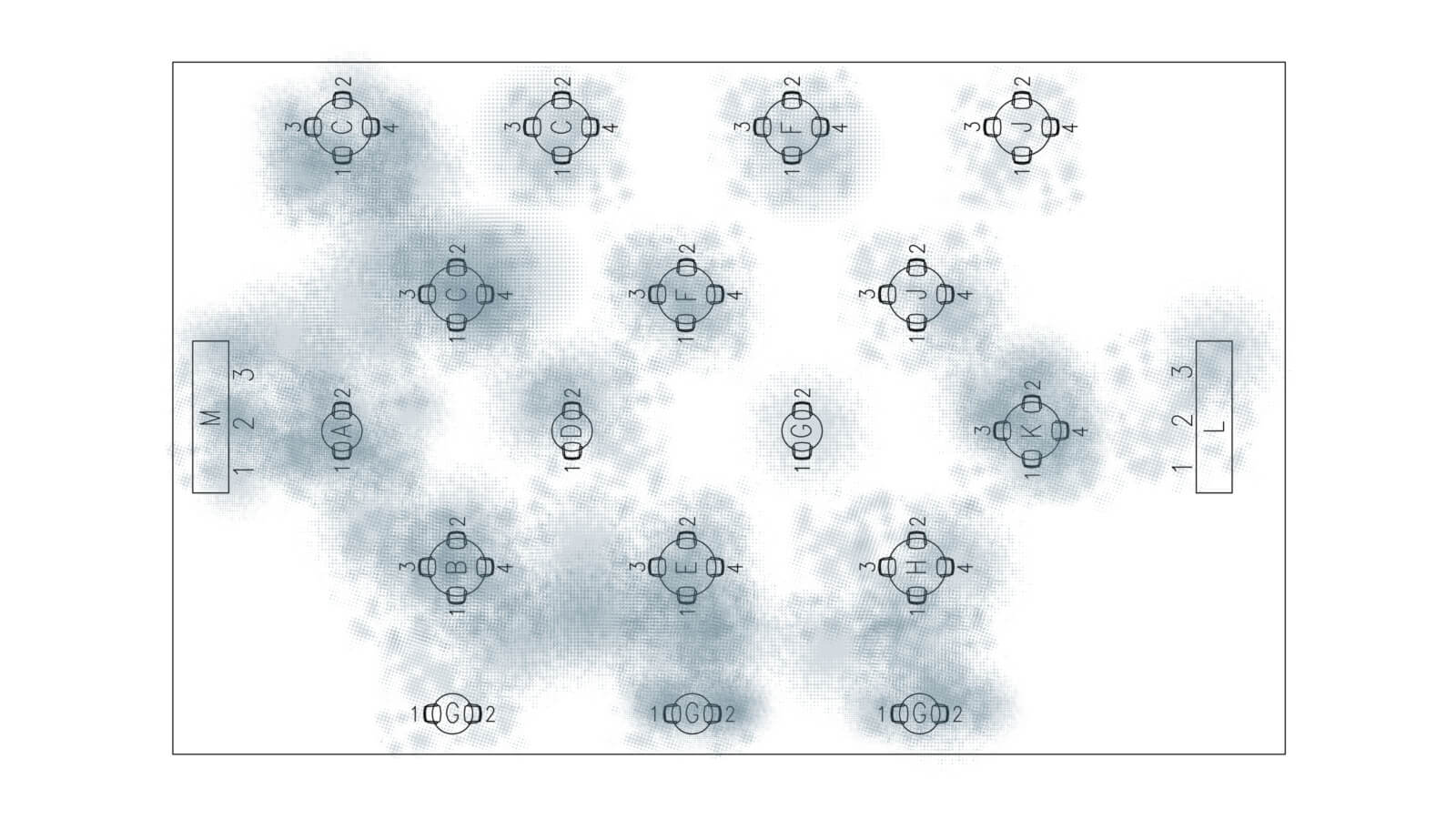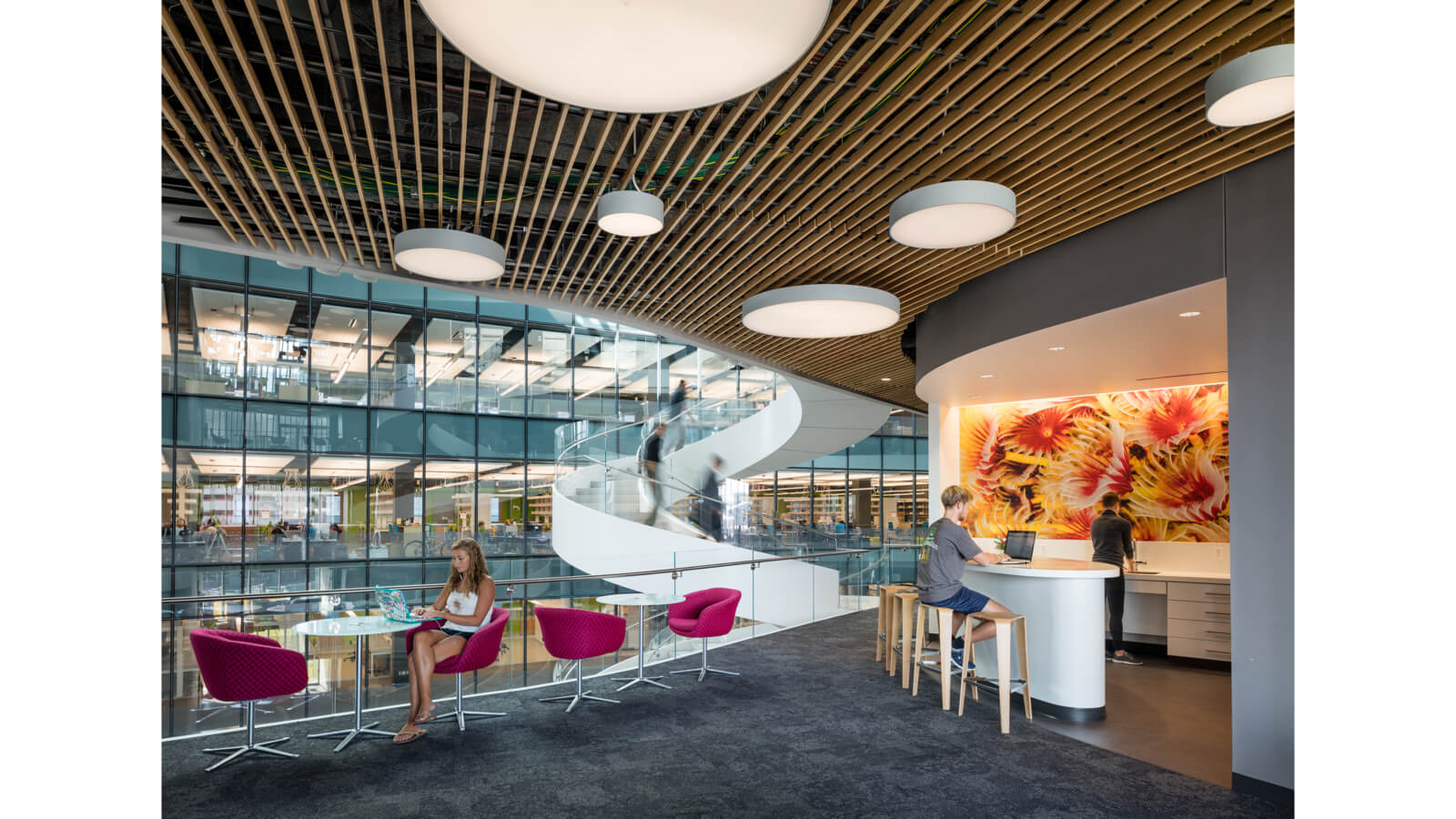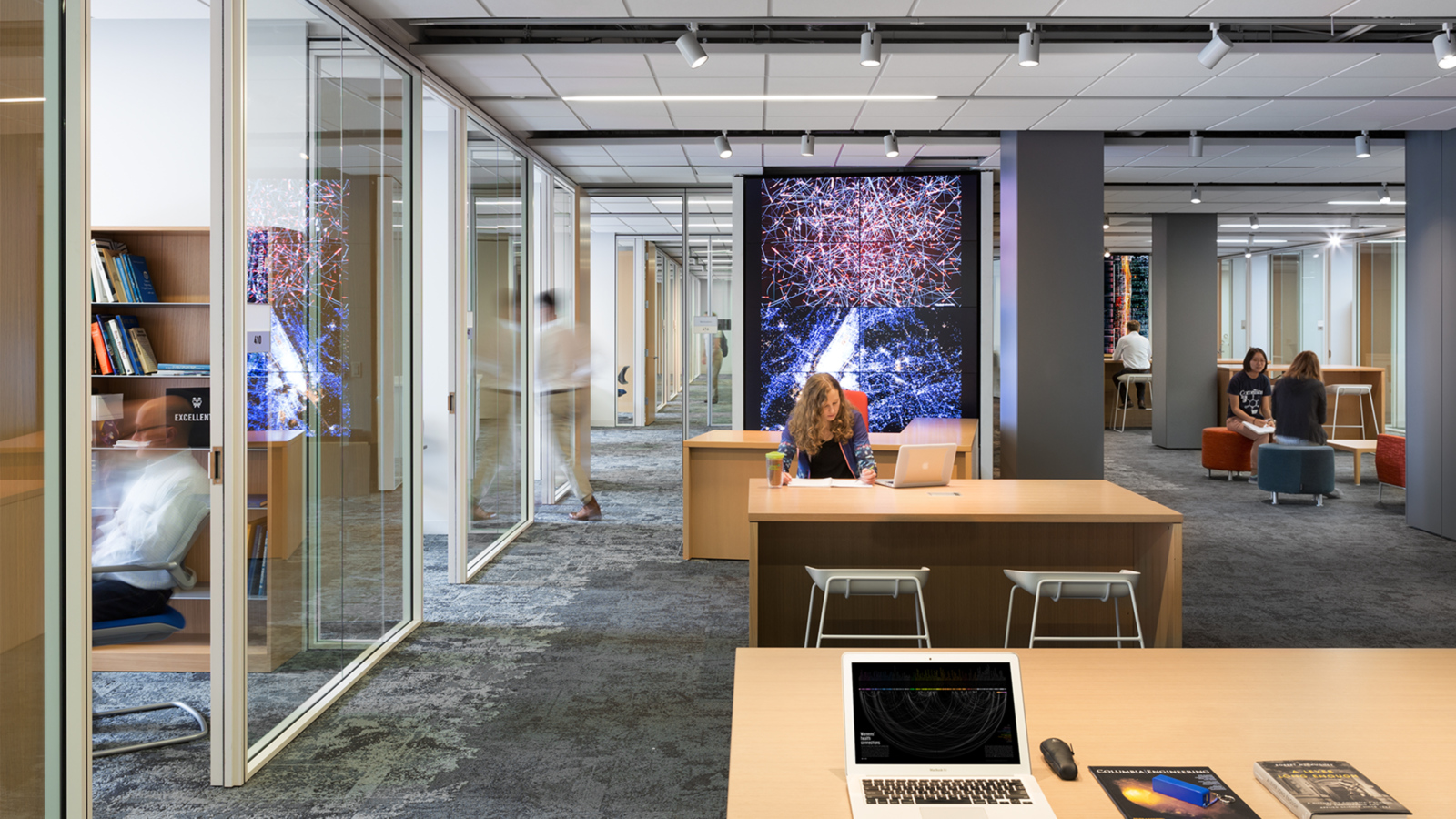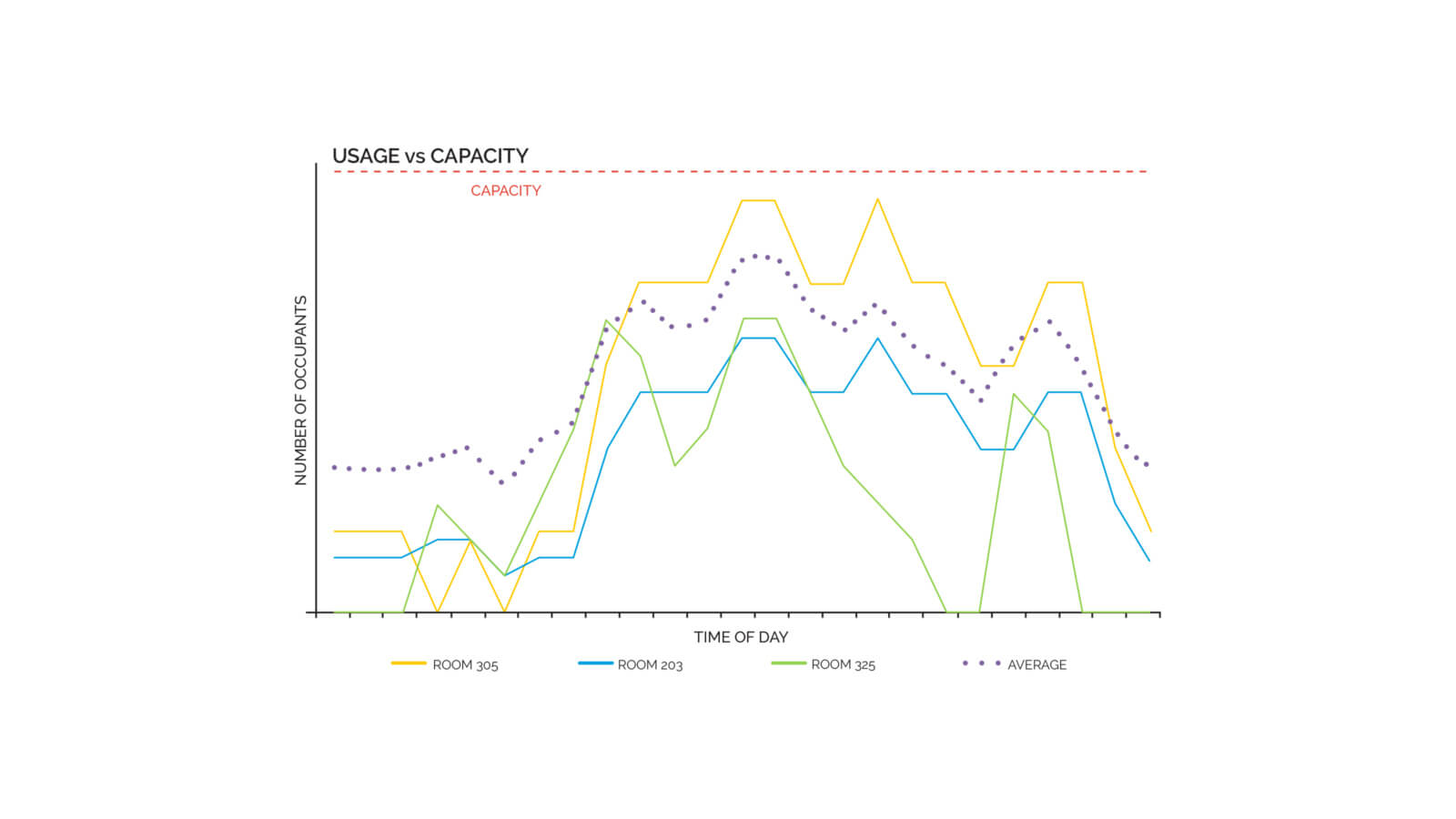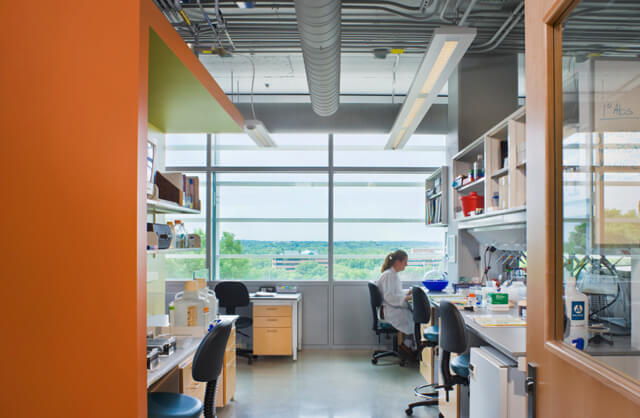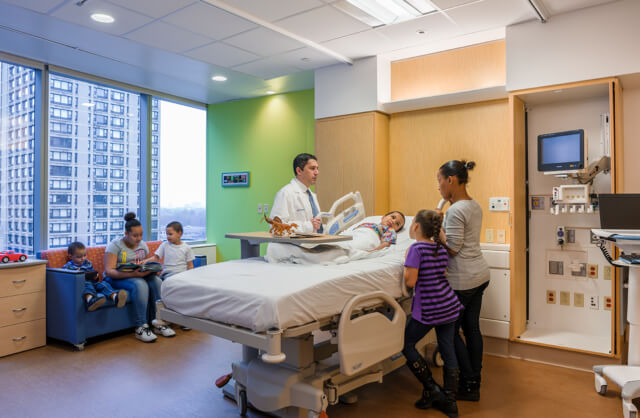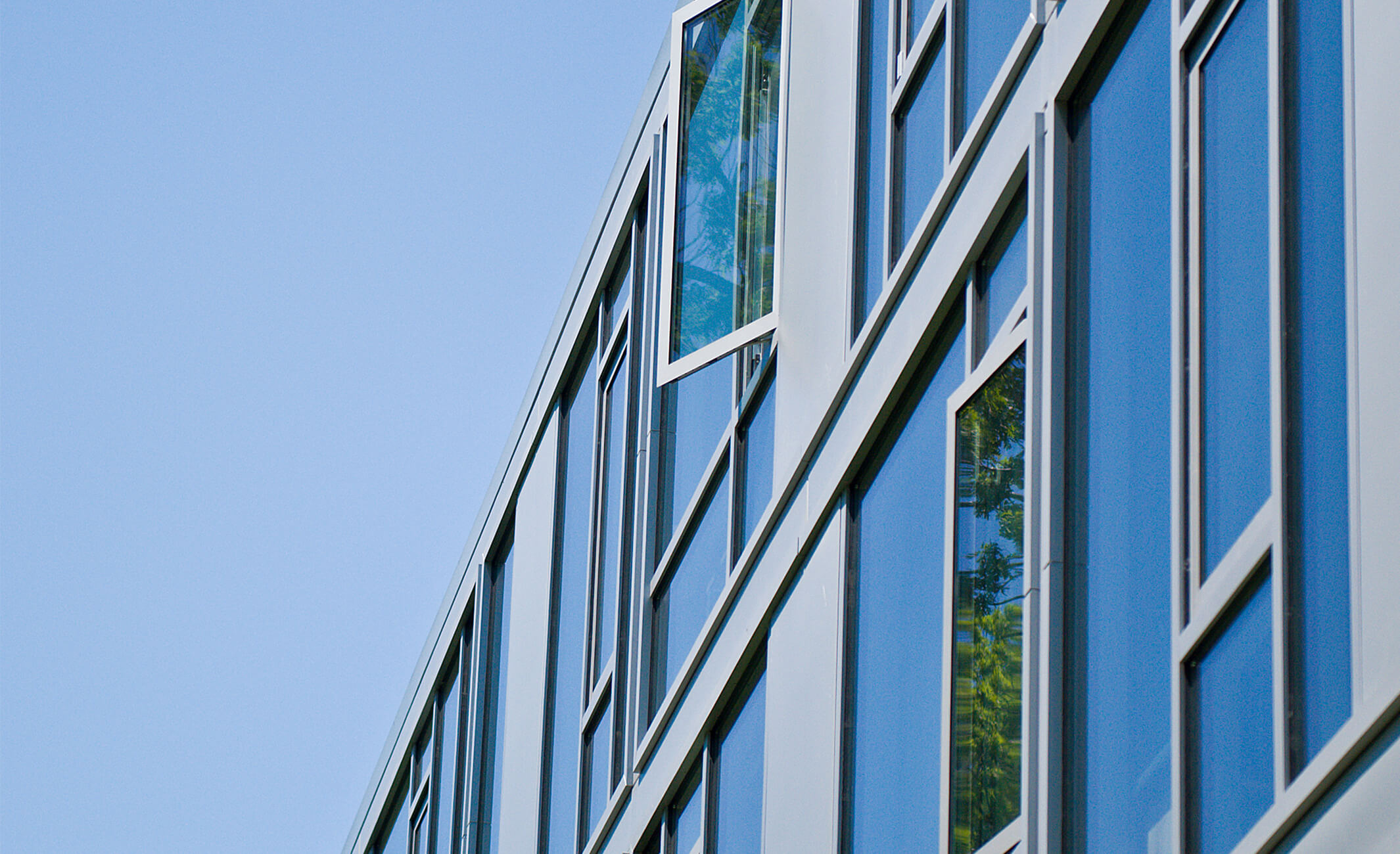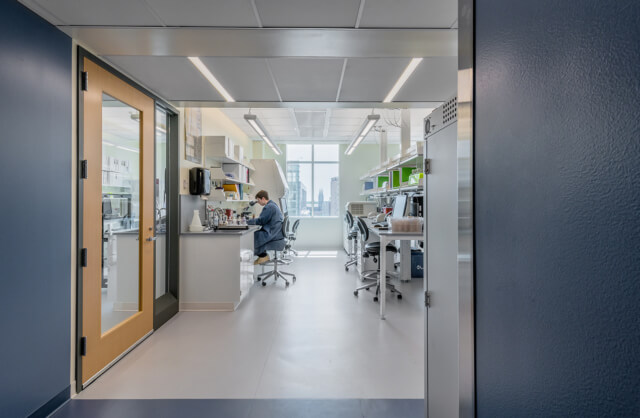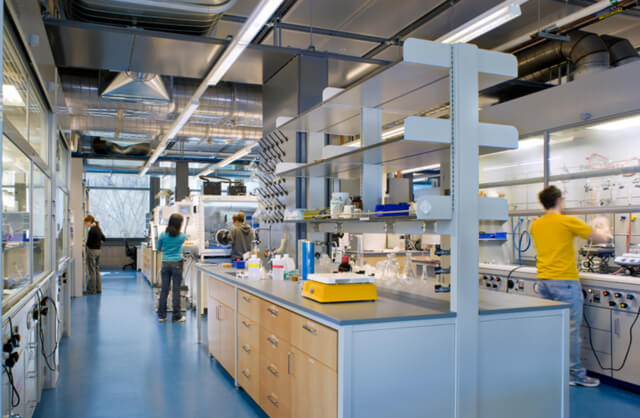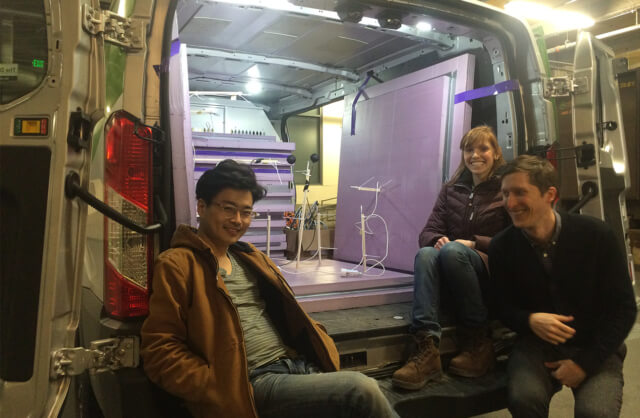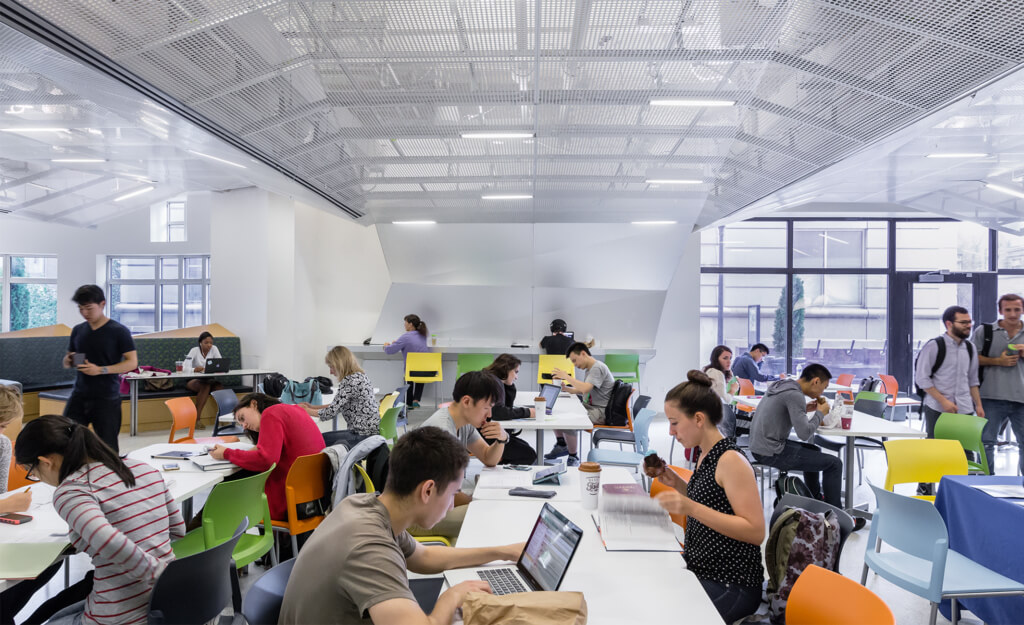
Technological developments over the last decade have enabled work to move from the confines of the traditional office and conference room into spaces that support collaboration, both functionally and socially. As a trend, this has led to an increased demand for non-traditional spaces that allow for collaboration in both research and education environments.
BLOG POSTS
TEAM
Nikolas Pappastratis
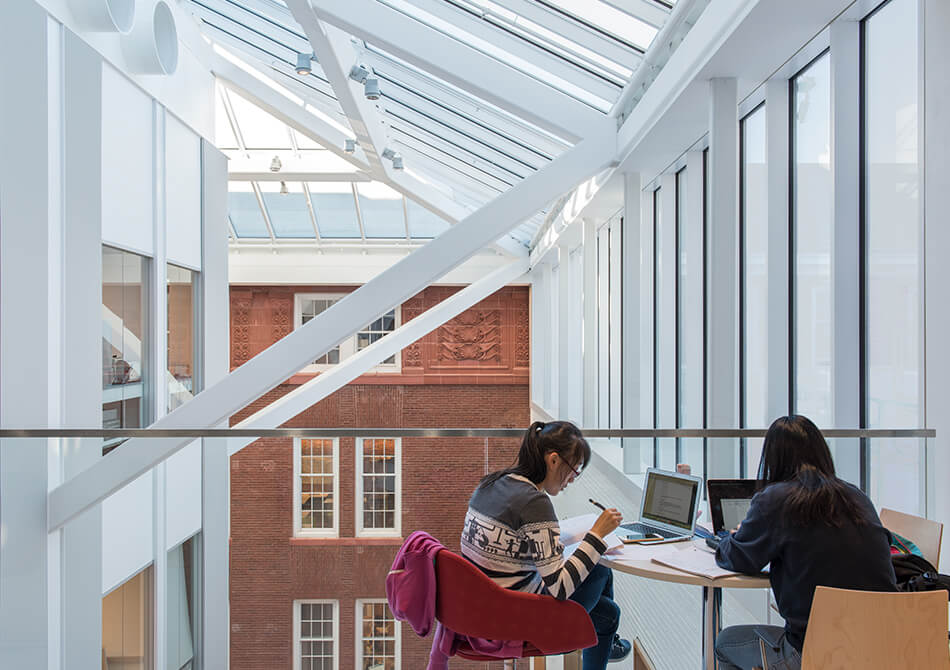
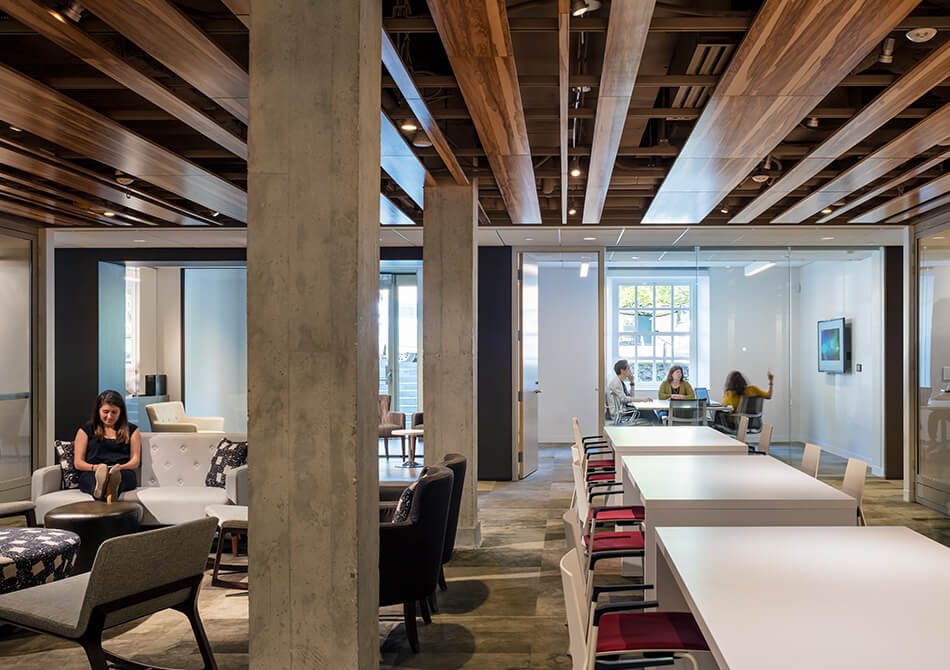
Challenge
Architects typically responded to this demand by providing maximum flexibility by means of lounges and open work areas. While these space types provide the degree of social and functional flexibility required to support collaboration, it has become clear that the success of collaboration spaces depends on more than just flexibility.
Solution
In recent years, PAYETTE has designed a number of buildings with collaboration spaces, including furnished atrium spaces, hallway lounges, furnished lobbies and open meeting spaces. Methodology success of collaboration spaces depends on aligning the needs of the users with the appropriate spaces in which those needs can be satisfied. In order to determine the success of a space, the behavior of the occupants is observed. Documenting the characteristics of the users, their positions in a specific space and their activities over time help create a multi-dimensional view of how spaces are being utilized.
The goal of this study is to identify and define the variables that determine the success of collaboration spaces in PAYETTE designs. Through literature reviews, plan analyses, surveys and observational research, the determinants of successful collaboration spaces, and the relationships between the determinants, are examined.

